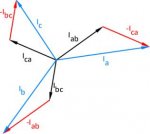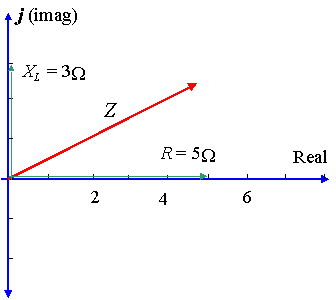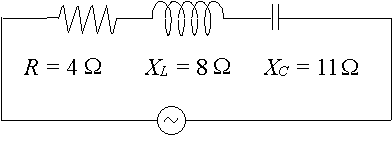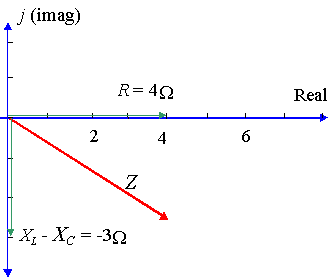almost_linear
Member
- Location
- UK
Calculating Phase-to-Phase Magnitude and Phase angle from Phase-to-Ground Mag&Angle
Hello,
As the title implies I am interesting in understanding the steps required to ‘move’ from P-G to P-P values.
Tools at my disposal are:
Matlab (Comtrade files read in function)
Omicron Test Universe. Advanced Protection Software Modules package with State Sequencer, Overcurrent.
Certain limitations I am interested in are:
The solution has to be trigonometric only. I have good reason to require this. i.e. Trying to keep processing raw data to a minimum.
I would like the solution with as minimal mathematical operations as possible. Trigonometric functions calculated using look up tables.
The forum thread below brought me here; however I am slightly confused by the answers. I consider my question sufficiently different to not piggy back on that post.
http://forums.mikeholt.com/showthread.php?t=157919
My question might be “too softwary” but here goes.
A bit more details:
I am generating 3-phase balanced and imbalanced signals via Omicron state sequencer. The signals are stored in comtrade format; three voltage and three current signals; 10kHz sampling rate; 12 mains cycles per file.
Estimating fundamental component (over one mains power cycle) rms magnitude and phase angle of the phase-to-ground raw signals found in the comtrade file. Phase angle values normalized to 0-360 degrees. Phase A will always be set to zero (the reference vector).
What I require now is to estimate the p-p rms magnitude and phase angle from those values.
Where I am now (/where I need your help):
Step 1 Finding the p-p voltage magnitude.
Step 1.1 Find the quadrant the Voltage vector lays within. Subtract pi were necessary (Quadrant dependant).
Step 1.2 Find the magnitudes purely applied to the X and Y axis of all p-g voltage vectors.
i.e. Use the sine and cosine functions and solve for opposite (Y-axis magnitude) and adjacent (X-axis magnitude) triangle side length.
Step 1.3 Apply Pythagoras theorem to find the hypotenuse (/p-p magnitude).
i.e. for say p-p magnitude of phases A and C, take the two previously estimated Y-axis magnitudes (one for phase A and one for phase C). Add the two and then square them. Take the two previously estimated X-axis magnitudes (for A and C). Add them and then square them. Add the two results and then square root that sum. The final result is the hypotenuse (/p-p magnitude).
Step 2 Finding the p-p voltage phase angle
Step 2.1 Find the quadrant where each of the Voltage vectors lay within. Subtract pi were necessary (Quadrant dependant). Sixteen distinct cases exist plus another four. The latter cases when both voltage vectors B and C lie within the same quadrant. One case exists for when B is leading C and one for C leading B.
Step 2.2 Use atan2 solution described here:
Angle of 2 relative to 1 = atan2(v2.y,v2.x) - atan2(v1.y,v1.x)
http://www.euclideanspace.com/maths/algebra/vectors/angleBetween/
i.e. Use the previously estimated magnitudes purely applied to the X and Y axis of all p-g voltage vectors.
Could someone please confirm that my approach is ‘reasonable’?
Is there a better way (/industry practise) of doing this? A source (link, book, Std, etc…) here would be much appreciated.
My ‘irritation’ with this solution is that it is very much Quadrant dependent. This makes for many ‘IF - Else if’ type statements. I am also of the opinion that a much simpler solutions exists which I cannot see at the moment.
Thanks and regards
Hello,
As the title implies I am interesting in understanding the steps required to ‘move’ from P-G to P-P values.
Tools at my disposal are:
Matlab (Comtrade files read in function)
Omicron Test Universe. Advanced Protection Software Modules package with State Sequencer, Overcurrent.
Certain limitations I am interested in are:
The solution has to be trigonometric only. I have good reason to require this. i.e. Trying to keep processing raw data to a minimum.
I would like the solution with as minimal mathematical operations as possible. Trigonometric functions calculated using look up tables.
The forum thread below brought me here; however I am slightly confused by the answers. I consider my question sufficiently different to not piggy back on that post.
http://forums.mikeholt.com/showthread.php?t=157919
My question might be “too softwary” but here goes.
A bit more details:
I am generating 3-phase balanced and imbalanced signals via Omicron state sequencer. The signals are stored in comtrade format; three voltage and three current signals; 10kHz sampling rate; 12 mains cycles per file.
Estimating fundamental component (over one mains power cycle) rms magnitude and phase angle of the phase-to-ground raw signals found in the comtrade file. Phase angle values normalized to 0-360 degrees. Phase A will always be set to zero (the reference vector).
What I require now is to estimate the p-p rms magnitude and phase angle from those values.
Where I am now (/where I need your help):
Step 1 Finding the p-p voltage magnitude.
Step 1.1 Find the quadrant the Voltage vector lays within. Subtract pi were necessary (Quadrant dependant).
Step 1.2 Find the magnitudes purely applied to the X and Y axis of all p-g voltage vectors.
i.e. Use the sine and cosine functions and solve for opposite (Y-axis magnitude) and adjacent (X-axis magnitude) triangle side length.
Step 1.3 Apply Pythagoras theorem to find the hypotenuse (/p-p magnitude).
i.e. for say p-p magnitude of phases A and C, take the two previously estimated Y-axis magnitudes (one for phase A and one for phase C). Add the two and then square them. Take the two previously estimated X-axis magnitudes (for A and C). Add them and then square them. Add the two results and then square root that sum. The final result is the hypotenuse (/p-p magnitude).
Step 2 Finding the p-p voltage phase angle
Step 2.1 Find the quadrant where each of the Voltage vectors lay within. Subtract pi were necessary (Quadrant dependant). Sixteen distinct cases exist plus another four. The latter cases when both voltage vectors B and C lie within the same quadrant. One case exists for when B is leading C and one for C leading B.
Step 2.2 Use atan2 solution described here:
Angle of 2 relative to 1 = atan2(v2.y,v2.x) - atan2(v1.y,v1.x)
http://www.euclideanspace.com/maths/algebra/vectors/angleBetween/
i.e. Use the previously estimated magnitudes purely applied to the X and Y axis of all p-g voltage vectors.
Could someone please confirm that my approach is ‘reasonable’?
Is there a better way (/industry practise) of doing this? A source (link, book, Std, etc…) here would be much appreciated.
My ‘irritation’ with this solution is that it is very much Quadrant dependent. This makes for many ‘IF - Else if’ type statements. I am also of the opinion that a much simpler solutions exists which I cannot see at the moment.
Thanks and regards





